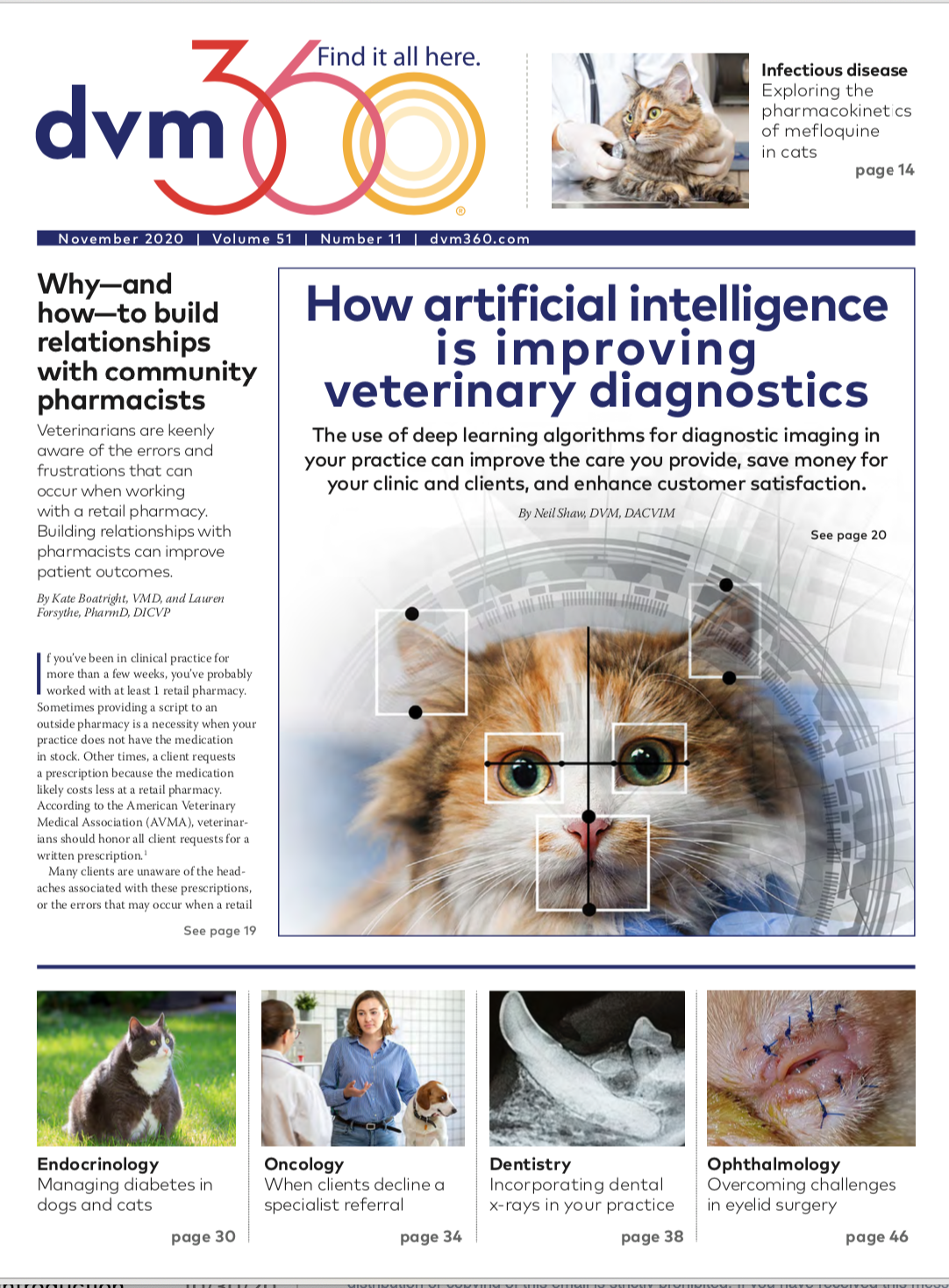Supporting well-being during COVID-19 and beyond
Now is the time to hyperfocus our efforts on improving veterinary well-being.
Inti St. Clair/stock.adobe.com

Well-being is critical to veterinary professionals both individually and as medical practitioners, practice owners, and team members. This has never been more true than during the coronavirus disease 2019 (COVID19) pandemic. Burnout, stress, and compassion fatigue can be challenges for veterinary professionals during normal times. The added complications and concerns that come with a global pandemic make it even more critical to keep an eye on our well-being.
Fortunately, we each have an opportunity—and an obligation—to help. As workplace leaders and practice owners, we can employ a number of strategies to make a real difference in the lives of our colleagues and teams. Small changes can shift our workplace environments in ways that lessen tensions, boost morale, and support each individual on the team more fully.
If we do this, we should see benefits to both individual team members and our businesses. Stressed teams often suffer from low engagement and productivity, which can impede the delivery of high-quality care and hinder practice performance. A practice that values a healthy and supportive work environment can boost productivity, increase job satisfaction, and help everyone focus on the important work of patient care.
What the data show
Even before COVID-19, there was a growing focus on veterinary well-being. Several studies taking a deep look at the issue have shown a decline in compassion satisfaction, and rising levels of burnout and secondary traumatic stress among veterinary professionals. Notably, the Veterinary Well-being Study, done in partnership by Merck Animal Health, AVMA, and Brakke Consulting, found high levels of student debt, perceived low pay, job stress related to treating sick animals, and challenging client situations to be the leading causes of low well-being among veterinarians The latest data from AVMA’s 2020 Census of Veterinarians survey show another trend: burnout and stress are rising much faster among associates than practice owners. In fact, these levels are at the highest we’ve seen since we started tracking the data in 2017. We also found that almost 40% of veterinarians are considering leaving the profession, citing a lack of work-life balance as the leading factor.
What we can do
As leaders in our veterinary practices and organizations, we can implement strategies to reduce stress and boost job satisfaction among team members. In fact, organizational leadership likely plays an even bigger role than changes an individual might make in their own life. We know this because studies looking at burnout among physicians found that interventions at the organizational level were more successful in lowering burnout than interventions at the level of individual clinician.
Change starts at the top
So, where to begin? We’ve found that employees who experience lower levels of burnout and work-related stress often have 1 thing in common with those who are engaged at work— leadership that’s focused on 1 or more items in a specific list of priorities:
- Engaging employees and developing a cohesive team
- Fostering a safe workspace that allows constructive and open debate
- Embracing change and transformational leadership
- Developing a strategy and successfully executing it There are many ways to work toward these goals. Here are some ideas.
Empower the whole team
Veterinary technicians are critical but often underutilized members of our veterinary practice teams. As with any professional, when technicians’ skills aren’t recognized or employed in practice, they can become disengaged and dissatisfied. On the other hand, when we make full use of technicians’ skills, these valuable team members feel more satisfied at work, veterinarians are able to focus on the work only they can do, and our practices run more efficiently. It’s a win-win situation.
Implement efficient processes
One of the main sources of workplace stress is feeling that we’re exerting too much time or energy on a specific task. Particularly during COVID-19, our teams are being stretched thin, especially with the extra work that comes from following new safety guidelines and procedures. We should look for any opportunity to simplify and streamline our operations. Not only will this lead to more efficiency, it also demonstrates to team members that we care about them and want to make their jobs and lives easier. Once you take the time to look, chances are you’ll find plenty of opportunities to tighten up operations, from payroll and accounting to pricing and purchasing.
Examine workplace culture
Workplace culture directly affects both team members’ well-being and practice success. What might a healthy workplace look like? One that places individual well-being at the center of the organization; invests in building an empowered, cohesive team; and fosters honest and respectful communication. This is influenced by everything from diversity and inclusion efforts to giving and receiving employee feedback, and there are resources you can tap to help move your organization forward. AVMA’s online Workplace Well-being Certificate Program, for example, empowers anyone on the team to support a culture of wellbeing in the workplace.
Motivate and inspire
Finally, we can empower team members to take steps to improve their own health and well-being. As we all know, it’s easy to get wrapped up in our day-to-day work. There always seems to be something else to do. Without even realizing it, team members may be prioritizing patient care and job responsibilities but neglecting their own self-care. When we implement changes at the organizational level, it can make healthy living more attainable at the individual level. These can range from quick improvements, like making nutritious snacks available, to more expansive changes, like revamping employee benefits. These changes can have both short- and long-term benefits. As an example, offering retirement planning to employees not only enables them to prepare for their future but also can give them peace of mind in the here and now.
What’s at stake
Burnout and stress are very real challenges right now. Current economic indicators point to a strong recovery across veterinary practices, but this also means staff are delivering care at a supercharged pace, requiring long and hectic workdays. (See my October column in dvm360®: “A new normal: Managing the ups and downs of COVID-19 recovery.”) Many are facing additional challenges at home, too, like overseeing remote education and childcare. Now is the time to hyper-focus our efforts on improving veterinary well-being. It’s critical for the health and safety of our teams, the delivery of care to our patients, the success of our practices, and the future of the veterinary profession. AVMA offers a plethora of articles and websites to delve further into the workplace well-being strategies discussed in this article.
Matthew Salois, PhD, is chief economist and director of the Veterinary Economics Division at the AVMA.






















